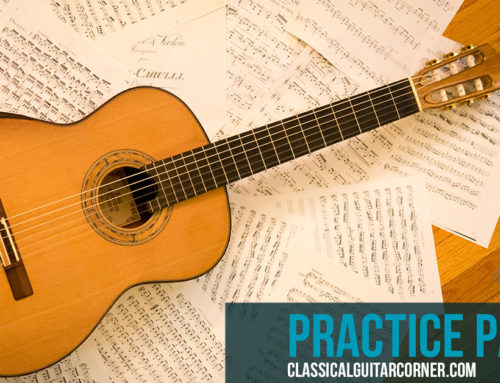Breaking Down a Passage of Music
In this article we’ll talk about breaking down a piece of music. This is a skill that can help you learn a piece at a much more in-depth level.
It is always surprising when after weeks, months and even years of studying a piece of music you can still be surprised by seemingly obvious musical elements that have eluded you for far too long! In past years I used to a new piece with such gusto that I dove straight in to playing through the whole thing, I had such an urgency to learn the piece that I often didn’t see the forest for the trees!
These days – after having far too many moments of realization that I have been doing something poorly or incorrectly for a long time – I try to be more methodical in how I learn passages of music. Even if everything seems blatantly obvious, I like to cover all the bases by breaking down passages of music into its fundamental elements. In this manner I understand the music far earlier on in the practice process and in turn I make better decisions that save countless hours!
Each passage in each piece brings up its own challenges but to give you an idea of what I am talking about I will demonstrate the process with a simple sequence from Giuliani’s Rossiniana op. 119 which I recorded on the album Departure
Step 1.
To begin with identify the most basic elements of the passage, this will often consist of melody and bass. In fig.2 it is clear that there is a sustained bass line that goes from A to D. In the melody, if we take away all but the important notes, we expose a simple downward scale that goes from E all the way down to D. The key of the piece is in A major, however with the G natural appearing in the scale and the melody and bass both ending on D we can see that in fact, this passage is cadencing in D major.
Step 2.
Adding in the middle voice (a scale from G natural to G natural an octave lower) and adding in the repeated bass notes we can still clearly hear the V to I motion in the Bass and the descending scale in the melody. The only difference is that now the harmony is more filled out and the bass line is intensified by repetition of the bass. Furthermore, we have added The dynamic of Forte and the instruction diminuendo e slargandosi a poco a poco. It is all too easy to forget to practice dynamics and tempo changes but in a way they are the X factor that makes the passage musical!
Step 3.
The final step is to add back in any embellishing notes and decide on a fingering that supports your musical ideas. By this point you will have worked through the passage many times and you will practice and perform it with more understanding and therefore more conviction.
[/fusion_builder_column]As I mentioned, each piece will deliver its own challenges and the above process may vary, however, the idea of breaking down passages is very useful in all forms of music and will save you a ton of time in the long run!
If the passage has any particular difficulties (this one has several slurs using the 4th finger) isolate the difficulties and create an exercise out of it. One example is given in Fig. 5:










Good tips for beginners who start early to memorise new pieces and complex music pieces.
Good techniques come from proper and right concepts such as correct posture and movement of fingers.
very gooooooooood ideas and methods
Great advice! I have actually only recently had such an insight into some phrases in the Sonata by Antonio Jose and am practicing the theme and variations by Ponce in this way in order to understand the music better as well as speeding up the memorisation.
Very nice how you’ve made an excercise out of this phrase.
weird thing about music is that you don’t need to have any technical understanding of what you are doing to make a tune. understanding is always needed to analyse a bit of music.. but understanding is not necessary in creating it.